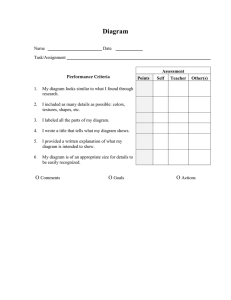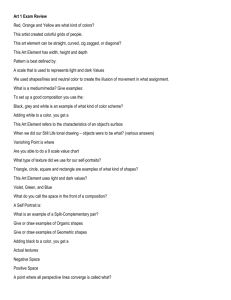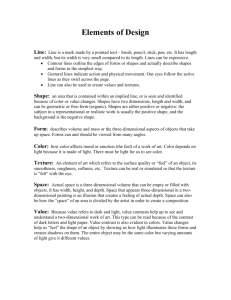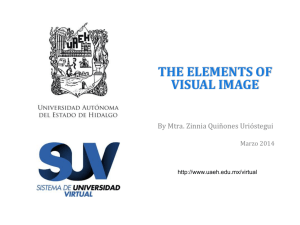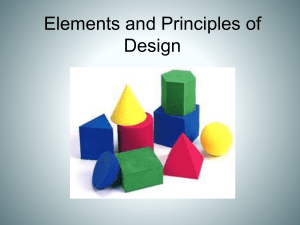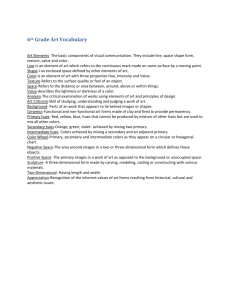Drawing Jobs
advertisement
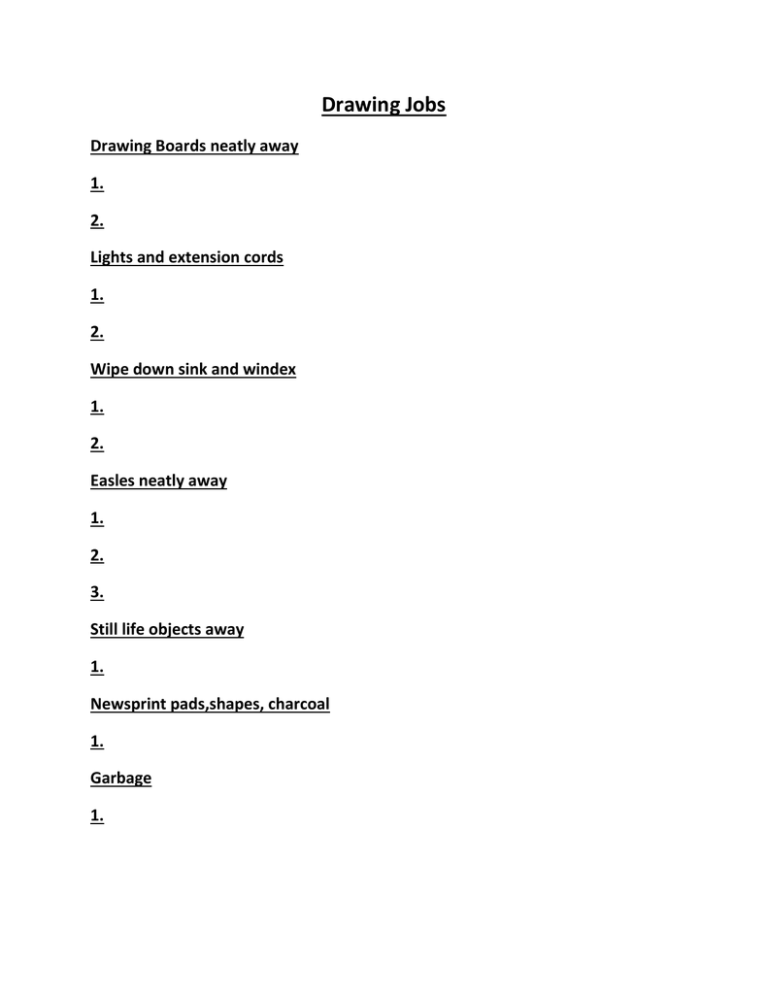
Drawing Jobs Drawing Boards neatly away 1. 2. Lights and extension cords 1. 2. Wipe down sink and windex 1. 2. Easles neatly away 1. 2. 3. Still life objects away 1. Newsprint pads,shapes, charcoal 1. Garbage 1. Display art work, viewfinders 1. 2. Errands 1. Shades 1. Hand out papers and collect papers 1. Erase white board and shut off lights 1. Take attendance 1. Line The element of art that is the path of a moving point through space. Although lines can vary in appearance (they have different lengths, widths, textures, directions, and degree of curve), they are considered one dimensional and are measured by length. A line is also used by an artist to control the viewers eye movement. There are five kinds of lines, vertical, horizontal, zig zag, curvy, and diagonal. Color An element of art that is derived from reflected light. Color pertains to the use of hue in artwork and design. Defined as primary colors (red, yellow, blue) which cannot be mixed in pigment from other hues, secondary colors (green, orange, purple) which are directly mixed from combinations of primary colors. Further combinations of primary and secondary colors create tertiary (and more) hues. Tint and Shade are references to adding variations in Value; other tertiary colors are derived by mixing either a primary or secondary color with a neutral color. e.g. Red + White = Pink. Value The element of art that describes the lightness or darkness of an object. Value depends on how much light a surface reflects or absorbs. Texture The element of art that refers to how things feel, or look as if they might feel if touched. Texture is perceive by touch or sight. Objects can have rough or smooth textures and matt or shiny surfaces. Shape A two dimensional area that is defined in some way. A shape has height and width. Shapes are either geometric or free form. Shape pertains to the use of areas in two dimensional space that can be defined by edges, setting one flat specific space apart from another. Shapes can be geometric (e.g.: square, circle, triangle, hexagon, etc.) or organic (such as the shape of a puddle, blob, leaf, boomerang, etc.) in nature. Shapes are defined by other elements of art: Space, Line, Texture, Value, Color, Form. Form Form may be created by the forming of two or more shapes or as three-dimensional shape (cube, pyramid, sphere, etc.). It may be enhanced by tone, texture and colour. Form is considered three-dimensional showing height, width and depth. Examples of these are sculpture, theatre play and figurines Space Space is the area provided for a particular purpose. It may have two dimensions (length and width), such as a floor, or it may have three dimensions (length, width, and height). Space includes the background, foreground and middle ground. Space refers to the distances or areas around, between or within components of a piece. There are two types of space: positive and negative space. Positive space refers to the space of a shape representing the subject matter. Negative space refers to the space around and between the subject matter. http://www.youtube.com/watch?v=nBem1EeO88w
